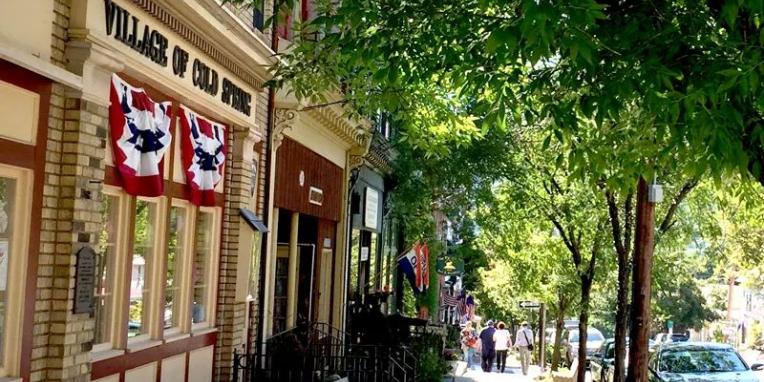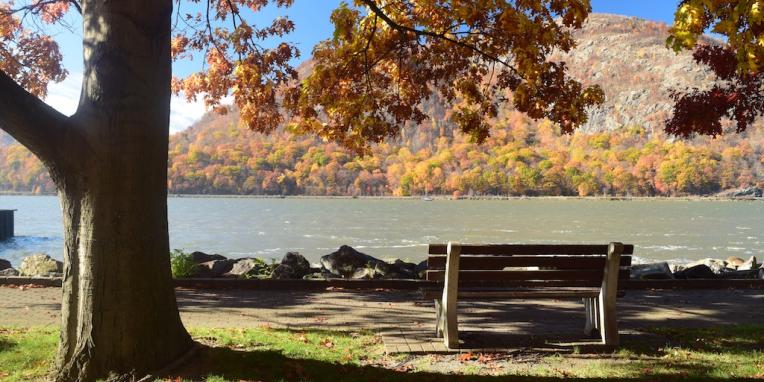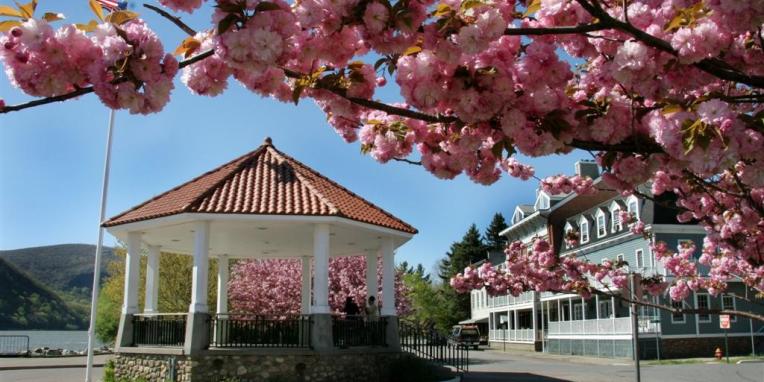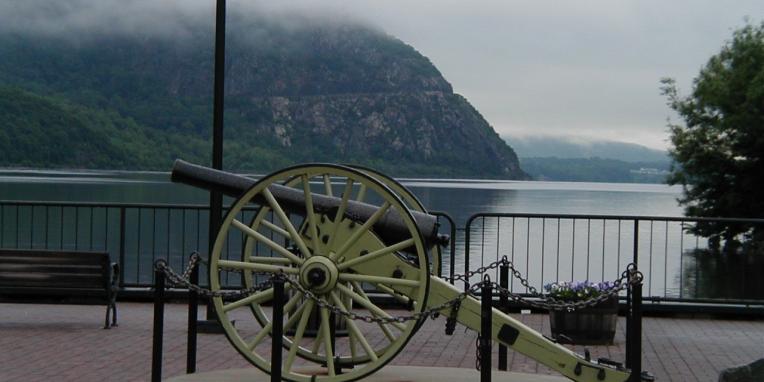About The Village
The historic Village of Cold Spring, New York, was incorporated in 1846 and is a small community of approximately 2000 residents located on the scenic banks of the Hudson River just 50 miles north of New York City. Easily accessible from major highways and the Hudson Line of Metro-North Railroad, Cold Spring offers a wide range of recreational and cultural diversion, as well as fine culinary choices from pizza and baked goods to some of the finest restaurants in the Hudson Valley. Visitors can browse through our unique shops, take historic tours or simply enjoy the breathtaking surroundings. Residents and tourists alike take advantage of a variety of outdoor activities such as boating, hiking, cycling and kayaking. For those seeking leisure and relaxation, there is plenty of quiet space at our picturesque waterfront and in our well maintained parks. It is easy to envision why a village was established here on the banks of the Hudson River. The abundance of natural resources and the ingenuity of Cold Spring’s first settlers put it on the map nearly 200 years ago, and we are still thriving today.
As early as the 1600s, the Hudson River was used as a major watercourse by Native Americans and continued to be a main mode of travel and transport until the nineteenth century. In addition, Cold Spring’s proximity to what is now Fahnestock State Park provided a cheap source of lumber and iron ore. Margaret’s Brook, a small creek located to the west of Route 9D which runs into the Hudson River, supplied hydro-power to the West Point Foundry, which helped propel Cold Spring from a tiny hamlet into a bustling village. Even the name of Cold Spring is linked to a natural resource. Myth has it that George Washington drank from a local spring and declared it to be refreshingly cold.
The first settler of Cold Spring was Thomas Davenport in 1730. A small trading hamlet grew alongside the river by the early 1800s, and in 1818, Gouverneur Kemble and others established the West Point Foundry. It became one of the major industrial sites in the United States and provided munitions (including the famed Parrott gun) for the Union Army during the Civil War. With the influx of workers at the Foundry, local housing, businesses and churches increased, and Cold Spring was incorporated as a village in 1846. During the last half of the nineteenth century, Cold Spring was a magnet for artists, writers and prominent families, all attracted to the extraordinary beauty of the Highlands. Great mansions were built along Morris Avenue, including Undercliff, the home of George Pope Morris, and Craigside, the home of Julia and Daniel Butterfield. After the Foundry closed in 1911, Cold Spring’s prominence faded; however, following World II, a rebirth began with an influx of businesses into the Hudson River Valley and commuters to New York City. In 1973, the Village was designated a Federal Historic District, and tourists have been visiting Cold Spring’s historic sites, shops, restaurants and hiking trails ever since.
Through the changing times since 1973, the Village of Cold Spring has been unique among the Hudson River communities in retaining its fundamental character. This is largely due to the steadfast loyalty of Cold Spring residents and their ingenuity in adapting to the needs of the present while carefully preserving their heritage and way of life.





